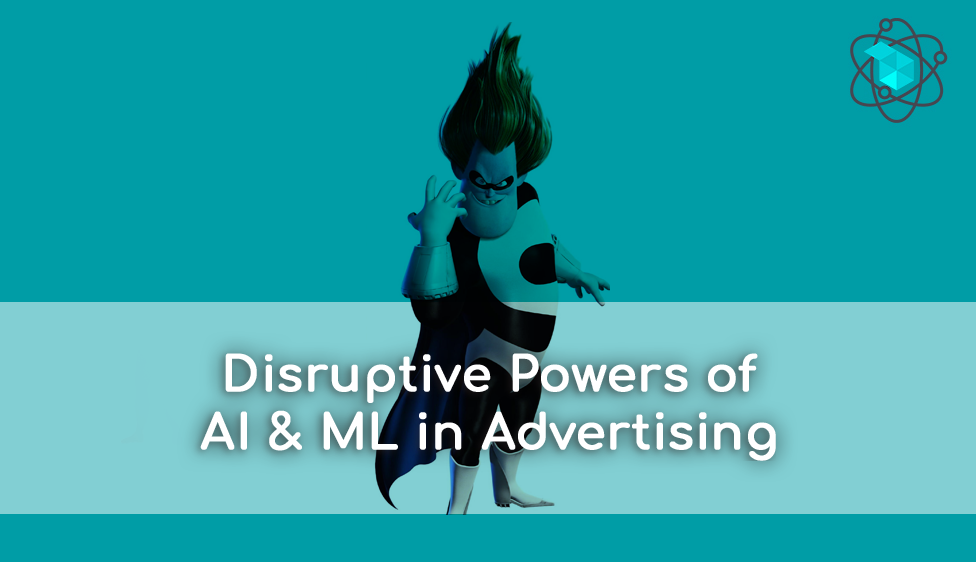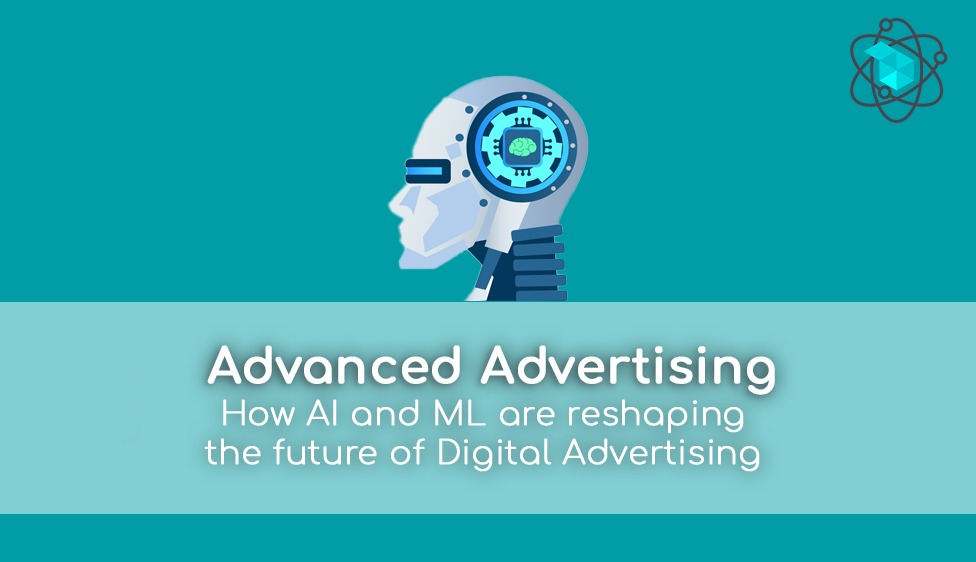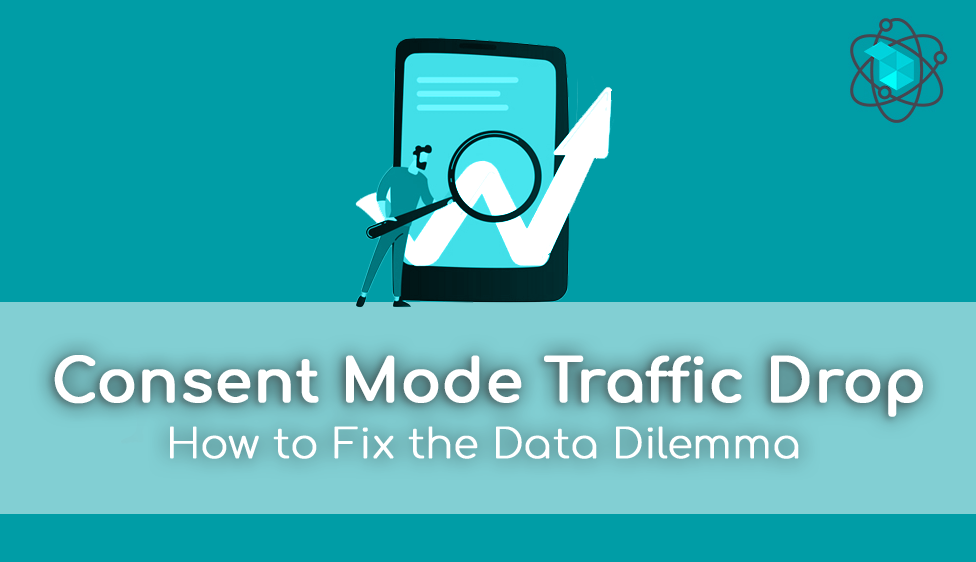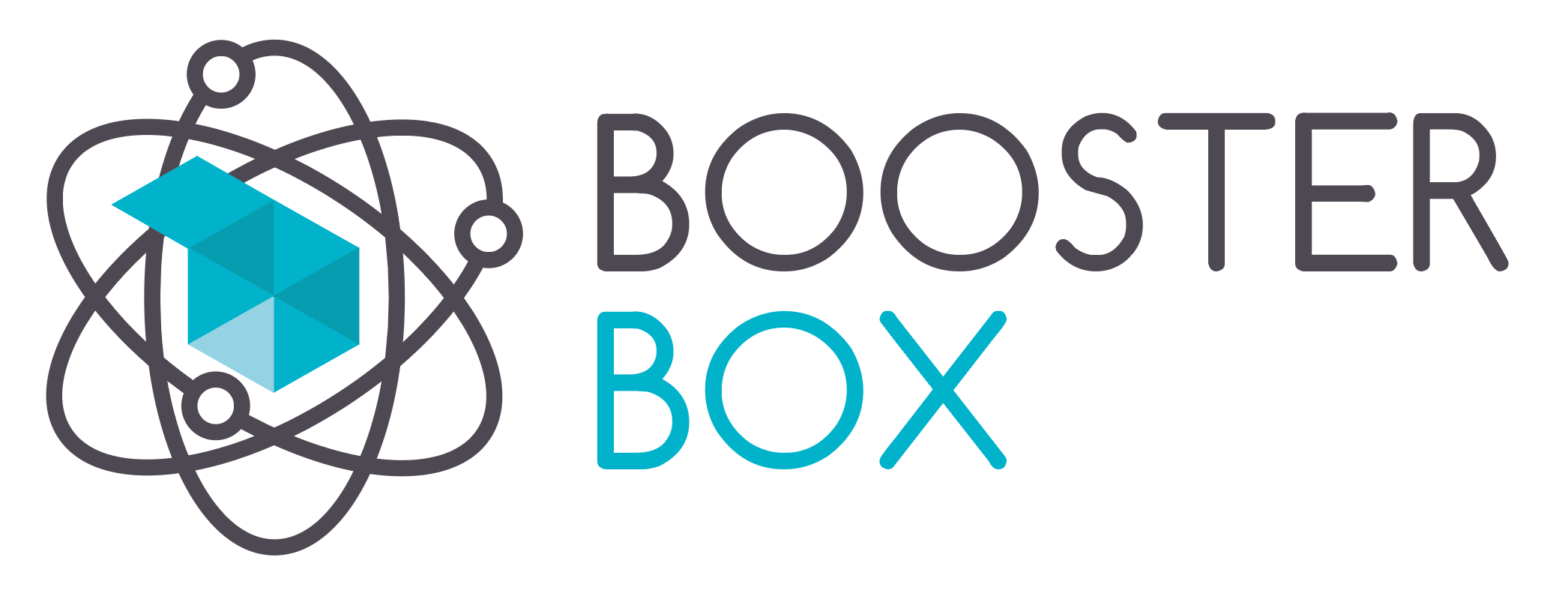
by Daniele Masiello | May 22, 2024 | AI & ML, Performance Marketing, Programmatic Advertising
Introduction
Welcome back, digital enthusiasts! Today, we’re diving into the future of media buying with a spotlight on Generative AI. To shed light on this topic, we’ve roped in the ever-insightful Rhys Cater, our Group Solutions Officer for Data and Tech at the Precis Group, to which we proudly belong.

Rhys is undoubtedly our go-to-person to understand the future of media buying with generative AI, so we couldn’t help but pick his brain about it. So, grab your cup (we suggest a piping hot, single espresso at the drop – but you do you), sit back, and enjoy this blend of insightful dialogue!

Q1: Rhys, let’s start with the basics. How is Generative AI different from other AI technologies we’ve seen so far?
Rhys: Since I’m talking with Italians, let’s go with a comparison that’s close to your heart and talk about coffee!
Generative AI is like that barista who knows exactly how you like your coffee, but instead of just serving you, it can also come up with new and exciting flavours you didn’t even know you wanted. Traditional AI and automation tools will mostly give you the answer that you asked for, and nothing more. Generative AI, on the other hand, creates new content – be it text, images, or even music – by learning from patterns and then innovating. It’s the difference between following a recipe and being a chef.
Q2: Fascinating! Coffee, recipes, chefs – you know who you’re dealing with, don’t you? 😏 (ed: he laughed). Back to business, how do you see Generative AI revolutionising media buying specifically?
Rhys: Picture this: a world where technology doesn’t just allow you to automate, but where it can truly augment human insight and creativity. In the media space where we deal with huge amounts of data, creative, and variables, the potential is big.
Generative AI can analyse vast amounts of data and generate media plans that are not only efficient but also tailored to specific industry or audience nuances. At Precis, we’ve integrated Generative AI into our tech platform (ed: it’s called Alvie, but this is another story for another time, hold your horses fam), which helps us with interactive data exploration and provides expert-level recommendations. This means our teams spend less time on mundane, repetitive tasks and more on strategic thinking and innovation.
Q3: We’d like to ask you a bit more about that tech platform. Our readers might want to get the beans spilled, but we’ll keep it for another time (sorry, reader). What about the quality of AI-generated content? Can it really match human creativity?
Rhys: This is the million dollar question. Generative AI is a powerful tool, but like any tool, its effectiveness depends on how you use it.
I can throw out some case studies, like a 50% increase in efficiency in our work in SEO for one client, but the reality is that human oversight is crucial and those efficiency gains are only valuable if we also maintain quality and innovation. AI can draft and create, but it’s our job to guide, refine and ensure the content aligns with our brand’s voice and strategy. Think of it as having an assistant who is excellent at brainstorming but who still needs your creative touch and mentorship to come up with a finished product.
Q4: Thanks for reassuring our copywriters Rhys, much appreciated. You made yourself a few allies at a stroke. So this opens up another question: there’s a lot of buzz about AI taking over jobs. What’s your take on this?
Rhys: The fear isn’t unfounded, but it’s also a bit exaggerated.
AI, including Generative AI, is more about augmentation than replacement. It takes over repetitive, process-driven tasks, freeing up human talent for higher-value work. This shift allows our team members to focus on learning and career development. In essence, AI is transforming roles rather than eliminating them. McKinsey Digital shared insights on this topic in this recent article I recommend. TLDR: you still need human capabilities to outcompete in the age of digital and AI, it’s still early days and there’s so much to learn.
Q5: Thanks for the TLDR, Rhys! Now, moving on, what specific challenges should companies be aware of when integrating Generative AI?
Rhys: There are a lot of challenges for companies to navigate! But where there are many challenges, there are also opportunities.
First off, quality control is paramount. AI can “hallucinate” and generate inaccurate outputs, so human supervision is a must. Secondly, legal concerns around copyright and data privacy can’t be ignored. Companies need to develop their own ethical guidelines and ensure all teams – from legal to marketing – are aligned. Lastly, fostering a culture that embraces change and innovation is crucial. Change can be daunting, but with the right vision and engagement, it can be an exciting journey. With all of these ingredients in place, companies create the foundations for success and advantage with new tech.
Q6: Can you give us more specific examples of how Generative AI is being used nowadays in media buying and planning?
Rhys: Absolutely. We have so many already happening all across Precis and Booster Box!
In our creative team, we’re using Adobe Firefly and Midjourney to speed up the concepting and production processes. In optimisation, we’re using AI to generate faster insights about ad and creative performance. And in our operations, we’ve used AI to massively improve product feeds which boosts performance in a fraction of the time that it would take humans to do the same job.
With Generative AI, the opportunity is huge and the only limit is your imagination. There’s no excuse not to find ways to innovate and improve the planning and buying process from end to end.
Q7: To conclude, an easy question: What does the future hold for Generative AI in media buying? (We know it’s everything but easy, but we’ve got a witty DNA. What jokers 🤡)
Rhys: The easy answer: the sky’s the limit! But more seriously, as the technology evolves, so will its applications, and it’s very difficult to see the future when we couldn’t even have imagined this level of sophistication just a couple of years ago.
My prediction is that we’ll see AI baked into more and more of the tools we use every day, from Google Ads through to creative production. This will have two effects: firstly, an explosion of new functionality and power within digital advertising platforms. Secondly: a paradigm shift in the skills that advertisers and agencies need to be successful. Knowledge is at less of a premium when every answer is just a prompt away, but the real value will come from companies and agencies who are able to think strategically and, most importantly, apply technology in an innovative and business-specific way to create impact!
Generative AI isn’t just a tool, it’s a catalyst for a more innovative, efficient, and creative future in media buying.
Q8: Surprise surprise, there’s one last question. If you had to pick a couple of key takeaways from your experience with media buying with generative AI, what would they be?
Rhys:
I’ve got a couple of high-level thoughts to share with you all on your first steps with media buying with Generative AI:
- It’s not the tech, it’s what you do with it that counts
Technology itself isn’t the endgame. It’s about leveraging Generative AI to drive strategic outcomes. This means integrating AI in ways that enhance our workflows and align with our business goals.
- Find the low hanging fruit of workflows that can be faster and more efficient with GenAI
Start by identifying simple, repetitive tasks that AI can handle. This frees up time for more strategic activities. Things will get complicated at a later stage, no need to anticipate it at the very beginning.
Thanks, Rhys!

There you have it, folks! A glimpse into the future of media buying with Generative AI, straight from the expert himself, Rhys Cater. As AI continues to evolve, so too will our strategies and capabilities. Stay tuned for more insights and keep innovating!

by Daniele Masiello | May 14, 2024 | AI & ML, Performance Marketing, PPC Strategy
Survival of the Fittest: Evolution in the AI & ML Future
In the age of AI, the advertising world is witnessing a Darwinian shift. Survival of the fittest no longer means having the largest budget or the loudest voice; it’s about adaptability and the strategic use of technology.

So the thing is: there’s no point in trying to flex the budget’s muscles in some kind of power struggle, as the fittest advertisers are those who understand that AI and ML are not just tools for efficiency but are also catalysts for innovation. They’re the ones who can blend data insights with creative brilliance to engage consumers in meaningful ways.
As AI continues to evolve, agility becomes paramount. Advertisers must evolve their strategies, test new approaches, and learn quickly from the market’s feedback. The rapid pace of change in AI technology means that what works today might be obsolete tomorrow.
The real winners in this landscape will be those who can anticipate changes, adapt strategies, and continue to deliver value to both their clients and their audience.
AI & ML: Not Just Tools but Game Changers
AI and ML are reshaping the very foundation of advertising, not just tweaking the edges. They enable a fundamental reimagining of how we approach marketing, offering a shift from gut-driven decisions to data-driven precision.

These technologies are game changers because they allow for personalisation at scale, predictive analytics, and real-time optimisation – capabilities that were once in the realm of science fiction. They are redefining what it means to be competitive by setting new standards for customer engagement, campaign performance, and ROI.
As we look to the future, we see that the true power of AI and ML lies not only in their current applications but also in their potential to unlock uncharted territories of creativity and efficiency. For advertisers, embracing AI and ML is not optional; it’s imperative for those who want to lead the pack in the next era of marketing.
Brace for Impact: Preparing for an AI & ML Dominated Future
As AI and ML technologies continue to advance, preparing for a future where tech dominates is crucial. This isn’t about fearing the machines; it’s about leveraging them to your advantage. Advertisers must become comfortable with the idea that AI can provide insights and execute tasks at a speed and scale that humans simply cannot match.

The key is to integrate these technologies into the fabric of advertising strategies, ensuring that teams are upskilled and processes are redesigned to complement the strengths of AI. It’s about creating a symbiotic relationship where technology handles data and analysis, while humans focus on strategy and creative interpretation.
Preparing for this tech-dominated future means embracing change, fostering innovation, and remaining flexible. Advertisers need to be ready to adapt to new tools and trends, future-proofing their strategies to stay relevant in the fast-evolving landscape of digital marketing.
Role of Leadership in this Brave New World
Spearheading Change: The Responsibility of Today’s Leadership
Leaders in today’s marketing landscape bear the crucial responsibility of spearheading change. As the front-runners in a rapidly evolving field, they must navigate their teams through the complexities of AI and ML integration.
This entails not only a deep understanding of these technologies but also the vision to see how they can redefine customer engagement and campaign effectiveness. True leadership means fostering a culture of innovation where team members are encouraged to experiment and learn.
It’s about building resilience within organisations to adapt to technological shifts. Moreover, leaders must ensure that ethical considerations keep pace with technological advancements, setting standards for transparency and data privacy. By championing a collaborative approach where tech experts and creative minds work together, leaders can drive the advertising industry toward a future that’s not just more advanced, but also more human-centric and value-driven.
The Right Mindset: Embracing Disruption as Growth
In the face of AI and ML disruptions, the right mindset for leaders is to view these changes as opportunities for growth. Embracing disruption isn’t just about staying current – it’s about pushing boundaries and redefining what’s possible. Leaders must instil a culture where disruption is synonymous with innovation, where the status quo is continuously challenged, and where creative thinking is the norm.

This mindset facilitates a proactive approach to technology, allowing teams to leverage new tools for competitive advantage. It’s about inspiring a forward-thinking attitude, where failure is not feared but seen as a stepping stone to success.
By encouraging teams to experiment and take calculated risks, leaders can foster an environment where embracing disruption leads to discovering new markets, creating more engaging content, and delivering exceptional customer experiences. This growth-centric approach is what will differentiate the leaders of tomorrow in the AI-enhanced advertising landscape.
Leading the AI & ML Future Conversation in Advertising
Leadership in the age of AI and ML involves driving the conversation around how these technologies will shape the future of advertising. It’s about being an active voice in the discourse, setting the agenda for how AI can be used ethically and effectively.
Leaders must champion discussions on best practices, share insights on emerging trends, and encourage dialogue about the long-term impact of AI on the industry. It’s not just about internal strategy but also about influencing the broader advertising community, from policy-makers to the public.
By leading these conversations, leaders can ensure that the industry advances in a way that maximises the benefits of AI and ML while mitigating potential risks. This thought leadership is essential for establishing standards that will guide the responsible use of technology, ensuring that the advertising industry remains both innovative and trusted by the consumers it serves.

by Daniele Masiello | Apr 22, 2024 | AI & ML, Performance Marketing, PPC Strategy
As AI and ML continue to advance in the realm of advertising, algorithms are reshaping the competitive landscape, leading to a scenario where the words of Syndrome from “The Incredibles” ring true: “when everyone’s super, no one will be“.

Much like superheroes with equal powers lose their uniqueness, the proliferation of AI and ML tools in advertising is causing a levelling down in the competition, blurring the lines between great advertisers and the rest. In this narrative we’ll explore how the rise of AI and ML disrupts the traditional advertising dynamics and challenges the notion of greatness in the industry.
The Power of AI & ML in Advertising
How AI and ML are Shaking Up the Advertising Industry
Artificial Intelligence (AI) and Machine Learning (ML) are not just buzzwords – they’re revolutionising the advertising game. By analysing vast amounts of data, algorithms can now predict consumer behaviour with uncanny accuracy. This means ads are more targeted than ever, reaching the right eyes at the right time. It’s like having a crystal ball that tells you exactly who wants to buy your product, sometimes even before the potential customer knows it themselves.

But it’s not just about precision: AI and ML are also making advertising more efficient. They’re automating the grunt work, from bid adjustments to A/B testing, freeing up humans to tackle more creative aspects. The result? A shift in how campaigns are run, who runs them, and the level of success they can achieve. Needless to say, those who master these tools are the new titans of the industry.
Syndrome’s Prediction
Remember what Syndrome in “The Incredibles” said? That’s a bit what it feels like in advertising today. With AI and ML democratising the ability to craft hyper-targeted, efficient advertising campaigns, the edge that once came from proprietary insights or hefty ad budgets is eroding.
This is great for competition, but it also means that standing out in the market is tougher than ever. It’s not enough to just use AI and ML, you have to use them smarter, better, and more creatively. The key to being “super” in this new age isn’t just about having the powers – it’s about how you use them.
Levelling the Playing Field
The thing about algorithms is they don’t care who you are – a giant corporation or a small indie brand, they work the same. This neutrality is what’s levelling the advertising playing field. With AI and ML, small businesses can access the same sophisticated targeting and optimisation capabilities that were once the exclusive domain of companies with deep pockets.
Algorithms analyse data and optimise ad spend, ensuring that even limited budgets are used in the most effective way possible. This means a fairer fight in the advertising arena: companies of all sizes can now make informed decisions driven by data, not just gut feelings.

For advertisers, this change means that success is less about who can shout the loudest and more about who can speak most directly to the customers’ needs and desires. It’s a new dawn for creativity and strategic thinking in advertising.
Implications for Today’s Advertisers
Navigating the New AI & ML Normal in Advertising
The “new normal” in advertising is a landscape where AI and ML are at the core of every strategy. For advertisers, this means rethinking traditional methods and embracing a data-driven approach. No longer can we rely solely on broad demographic targeting; it’s about understanding micro-moments and consumer intent. Personalisation is key, and AI helps by sifting through data to create individualised ad experiences at scale.
But with every brand having access to these tools, the challenge is to add that extra layer of creativity and human insight that an algorithm can’t replicate. Advertisers must now focus on crafting stories that resonate, supported by the analytical power of AI to place those stories in front of the right people.
Standing Out When Everyone’s Super
In the AI and ML market, relevance becomes the currency of competition. It’s no longer just about being seen; it’s about being seen by the right person at the right time with the right message.
We illustrate this principle in action in our case study with Subito, showcasing a micro-targeting approach solely focused on the most relevant potential customers in the moments that mattered. Read more here:
READ CASE STUDY
As everyone gains access to superhero-like powers through AI, the true challenge is to stand out. This requires a deeper understanding of your audience, and also a tech stack to run the extra mile.
The brands that thrive are those that use AI to enhance their unique voice rather than to blend in with the crowd. They find niches and underserved audiences, combine the analytical power of AI with strong creatives, build smarter campaigns – and cut through the noise, remaining relevant in a saturated market.
Riding the AI & ML Wave in Advertising
Keeping pace with innovation in AI and ML isn’t just about adopting new technologies; it’s about fostering a culture that embraces change. Advertisers must be agile, ready to pivot strategies as new advancements emerge. The key to successfully riding the AI and ML wave is continuous learning and experimentation.

Those who invest in understanding the nuances of AI-powered tools and integrate them seamlessly into their workflows will stay ahead. As AI and ML evolve, so too must the skill sets of marketing teams.
This includes data literacy, analytical thinking, and a relentless focus on the customer experience. By staying inquisitive and open to the possibilities AI and ML offer, advertisers can not only keep up with the wave but also surf it to greater heights of success.

by Daniele Masiello | Apr 11, 2024 | AI & ML, Performance Marketing, PPC Strategy
In the fast-evolving landscape of digital marketing, artificial intelligence (AI) and machine learning (ML) stand at the forefront, revolutionising the way brands connect with their audiences. From hyper-personalised ad targeting to predictive analytics enhancing campaign success, these advanced technologies are reshaping the future of advertising.
Dive into this insightful exploration to discover how AI and ML are propelling the digital marketing realm towards unprecedented levels of efficiency and effectiveness, unlocking a world of opportunities for global companies eager to maximise their advertising impact.
Introduction to Advanced Advertising
Marriage of Marketing and Technology
Marketing and technology have tied the knot, and it’s a match made in heaven for digital advertisers. This union offers a dynamic duo that can target audiences with precision, making sure that every ad dollar is spent wisely.

AI and ML are not just tools in the marketer’s belt but are becoming central players in crafting and deploying strategies. They analyse vast amounts of data, identifying patterns that could take humans ages to uncover. This partnership is about using technology not only to understand the consumer but also to predict their behaviour, which in turn, informs how and when to engage with them.
The result? Campaigns that are smarter, more responsive, and ultimately, more effective in driving results. This convergence of marketing and tech is redefining the landscape, and it’s just the beginning.
Understanding AI and ML Basics
To get a grip on AI and ML, think of AI as the broader concept where machines carry out tasks in smart ways, mimicking human intelligence. ML is a subset of AI, focusing on the ability of machines to receive data and learn for themselves.
It’s all about algorithms and statistical models that computers use to perform tasks without being explicitly programmed for each step. Imagine feeding a machine a diet of data – over time, it starts to recognize patterns and make decisions based on its learning. That’s ML at work.

It’s not about robots taking over the world; it’s about them helping us to understand our world better. For marketers, this means tapping into a wealth of insights to craft campaigns that really resonate. And that’s just scratching the surface.
AI and ML: The New Marketers
How AI is Changing Advertising Game
AI is shaking up the advertising world by bringing in a level of precision and personalization we’ve never seen before. Instead of casting a wide net with generic messages, AI powers targeted ads that speak directly to the individual’s interests and needs. It’s like having a personal shopper for your digital life, suggesting products you’re likely to buy or content you want to see.
AI’s machine learning algorithms analyse user data – from browsing history to purchase patterns – and then predict what kind of ad will hit the mark. This means higher conversion rates for companies and less ad fatigue for consumers. Plus, AI is always on the job, optimising campaigns in real-time and learning from what’s working (and what’s not). It’s a game changer that’s transforming clicks into customers more efficiently than ever.
Machine Learning and its Advertising Applications
Machine learning is the secret ingredient that’s supercharging advertising applications. By sifting through mountains of data, ML spots trends that would be invisible to the human eye.
Take programmatic advertising, for example. ML algorithms are the puppet masters, buying and placing ads in milliseconds based on user behaviour, ensuring the right message reaches the right person at the perfect time. It doesn’t stop there. ML helps in optimising budgets by allocating funds to high-performing channels and cutting corners on the rest.
It’s also behind the scenes, fine-tuning search engine marketing so that potential customers find what they’re searching for faster. What’s more, by analysing customer feedback and sentiment on social media, ML helps brands pivot their strategies in real time, staying ahead of the curve. This isn’t just the future of advertising; it’s the now, and it’s brilliant.
Real-world Use Cases of AI and ML in Advertising
Influential Brands Using AI and ML
Some of the biggest names in business are harnessing the power of AI and ML to take their advertising to the next level. Amazon makes product recommendations with uncanny accuracy, thanks to ML algorithms digesting your shopping habits. Netflix uses similar technology to suggest shows and movies, keeping you glued to the screen.
Over in social media, Facebook and Google optimise ad placements with AI that factors in countless user data points. Then there’s Nike, leveraging AI to craft personalised marketing campaigns that not only engage but also build a deeper connection with their customers.
These influential brands are proof that AI and ML are not just passing trends but essential tools for staying competitive in today’s cutthroat advertising landscape. They’re leading the charge and setting the standard for what’s possible in digital marketing.
AI and ML Shaping the Programmatic Advertising
Programmatic advertising has been completely revamped with AI and ML, making ad buys more efficient and targeted than ever before. Instead of the traditional, time-consuming process of ad placements, AI algorithms now handle the heavy lifting, buying ad space in real-time through automated bids.
This means ads are more likely to be seen by people who are genuinely interested in what’s being offered. ML takes it further by analysing performance data to continuously improve targeting strategies and optimise ROI.
The result? Ads that are not only seen but also acted upon.

This shift has been a game-changer for advertisers who now have more control over their ad spend and can see tangible results from their campaigns. AI-driven programmatic advertising is not only more cost-effective but also delivers a level of personalisation that was once thought impossible.
Coming Impact of AI and ML on Digital Marketing
AI and ML: The Future of Personalised Marketing
The future of personalised marketing shines bright with AI and ML at the helm. We’re moving towards a world where marketing feels less like a business transaction and more like a personal conversation.
AI excels at picking up on the nuances of consumer behaviour, enabling hyper-personalised content that speaks directly to individual needs and preferences. With ML’s predictive analysis, marketers can anticipate customer needs before they even articulate them, offering solutions at just the right moment.
This level of personalisation not only enhances the customer experience but also fosters loyalty and increases the lifetime value of each customer. In the future, we can expect AI and ML to keep pushing the boundaries, making every digital interaction feel tailor-made. The one-size-fits-all approach is on its way out, and personalised marketing is here to stay.
How to Prepare for the ML and AI Marketing Revolution

To get ready for the ML and AI marketing revolution, start by embracing data. The more quality data you have, the better these technologies can work for you. Invest in tools and platforms that leverage AI and ML to analyse customer interactions and gather actionable insights.
Building a team with the right skill set is crucial; look for talent that understands data science as well as marketing. Training existing staff on the basics of AI and ML can also be beneficial. Keep an eye on emerging trends and applications of AI in marketing to stay ahead of the curve.
Most importantly, keep the customer experience front and centre. Use AI and ML to enhance, not replace, the human elements of marketing. By preparing now, you’ll be well-positioned to ride the wave of the AI and ML marketing revolution.
Conclusion: Embrace the Future of Advertising
Are You Ready for Advanced Advertising?
So, are you ready to jump on board with advanced advertising? The AI and ML train is leaving the station, and it’s picking up speed. If you’re still relying on traditional methods, you might find yourself left behind.
Embracing AI and ML doesn’t just mean staying current; it means being a leader in a space that’s constantly evolving. It’s about understanding your customers on a deeper level and meeting them where they are with solutions they crave. The question isn’t whether AI and ML will be a part of the future of advertising – it’s whether you’ll be at the forefront, using these tools to create campaigns that resonate and drive results. The opportunity is here, and it’s yours for the taking. Are you on board?

by Daniele Masiello | Mar 21, 2024 | Analytics, Consent Mode V2, Digital Markets Act, Tracking
Ever hoped for a bit of calm after implementing Consent Mode V2?

Well, in the fast-paced world of advertising, tranquillity is about as common as spotting a unicorn. As the philosopher Arthur Schopenhauer famously quipped, “the two foes of human happiness are pain and boredom”.
But let’s be real, boredom – in advertising? Non-existent.
It’s a constant whirlwind of activity, never a dull moment. But let’s cut the theatrics and get down to business, especially when facing the challenges of the Consent Mode traffic drop.
THE EVIDENCE BEHIND CONSENT MODE TRAFFIC DROP
Let’s start with the basics: life in advertising is dangerous, yes, we heard you. “We’re all in this together” (if you’re singing the High School Musical song now, you had a nice and sweet childhood. Well you might have had a good one even in the other case but come one – there’s no comparison).
Also, as you know, we’re data-driven-and-dangerous. Like life in advertising, but in a good way. This to say, we had to provide scientific evidence of what we’re talking about. Accounts implementing Consent Mode witnessed:
- A drop in traffic ranging from 40% to a jaw-dropping 90%, when implemented alongside a cookie banner
- Modelling taking a leisurely stroll into reports, with some reports playing hard to get for up to 20 days
Considerations:
- A 40% to 70% organic drop is expected, with higher drops possibly linked to factors like brand trust for each specific market
- Some accounts fail to meet Google’s requirements for Consent Mode data integration into GA4 reports
WHAT IS THAT SUPPOSED TO MEAN?

Let’s decode the jargon. What’s the deal with advertisers experiencing severe performance drops in ROAS, Conversions, CPA, and AdSpend post-Consent Mode V2 implementation?
Switching to Consent Mode disrupts the flow of data to Analytics and Advertising platforms, leaving campaigns in a state of shock. Each campaign, much like each session with ChatGPT, is unique and starts collecting data afresh. So, when the data faucet suddenly changes course, confusion ensues. It’s like algorithms are having an existential crisis:
- Is it my fault?
- Did things change dramatically?
- Shall I lower that bid?
In a nutshell, it’s like flipping the script on campaigns, but instead of tweaking external factors like budget or targets, we’re messing with the very fabric of data streams and experiencing the repercussions of the Consent Mode traffic drop.
A NECESSARY DETOUR
We could simply provide a link and call it a day, but where’s the fun in that? We prefer to take a more scenic route, much like Virgil guiding Dante through the circles of Hell (wow, we went pretty hard on that!) As performance marketing experts, we’re committed to ensuring you understand every step of the journey.

So, let’s delve into Google’s prerequisites for Consent Mode data integration:
- Ensure Consent Mode is activated across all pages of your websites or all app screens
- Implement Consent Mode for web pages so that tags load before the consent dialog appears, ensuring Google tags load in all instances, not just when the user consents (advanced implementation)
- Your property should collect a minimum of 1,000 events per day with analytics_storage=’denied’ for at least 7 days
- Ensure you have at least 1,000 daily users sending events with analytics_storage=’granted’ for at least 7 of the previous 28 days
- Note that meeting the data threshold within the specified timeframe may take more than 7 days, and additional data may still not be sufficient for Analytics to train the model effectively
Navigating these prerequisites is crucial for addressing the challenges posed by the Consent Mode traffic drop.
HELLO CONSENT MODE TRAFFIC DROP
You implemented Consent Mode, and suddenly, traffic and performance are on a downward spiral. You’re nodding in agreement, feeling the frustration. We’re not claiming clairvoyance here; it’s just a matter of analysing the data. We rely on data for everything, even stocking our headquarters’ cereal supply – talk about being prepared for any scenario.
Where were we? Ah, yes, the drop in tracked data. Two scenarios unfold:
- Scenario 1: It’s a waiting game. After the time it takes for machine learning to track data, accounts return to their pre-implementation traffic levels. No need to panic; just give it time. After all, Rome wasn’t built in a day.
In this scenario, two burning questions arise:
1) How long does it take for data to bounce back?
Answer: It varies, depending on the volumes of the website where Consent Mode was implemented. Typically, it ranges from 7 to 20 days
2) Are there any metrics that remain different from before?
Answer: Yes, new user metrics tend to recover more slowly than other metrics
- Scenario 2: The drop persists, signalling a deeper issue. This happens when accounts fail to adhere to Google’s requirements.
FIX TO SCENARIO NUMBER ONE
Fixing time? Not exactly possible, but hey, good things come to those who wait, right? So, grab a coffee, binge-watch a show, and relax. The Consent Mode traffic drop will work out eventually.
Feeling sceptical? No worries – piece of cake (sorry for making your stomach growl, our bad). Just get in touch, and we’ll provide reassurance. Easy peasy.
FIX TO SCENARIO NUMBER TWO
Yass, the wait is over. The much-awaited solutions to your dilemmas are finally here (well, those regarding Consent Mode traffic drop of course – we’re nerds, not the Cumaean Sibyl).
So, what are the options to solve this?
- Export data in BigQuery:
Dive into the sample data retrieved by Consent Mode to understand why your modelling isn’t working as expected
(Keep in mind, though, that this export might incur some costs if you don’t have it enabled. Reach out to us for clarification)
- Analyse user behaviour with our banner script + CRO:
Our custom script delves into how users interact with your banner, providing insightful analysis. Based on this data, we can offer feedback to enhance your banner and drive users towards the “accept all” option. Sounds too good to be true? It’s the real deal.
- Utilise offline imports:
Integrate events and information seamlessly to mitigate the impact of Consent Mode.
- Assess Consent Mode implementation:
Take a closer look at how Consent Mode is implemented across your platforms. Or maybe just ask us to do so.
- Set up a Server-to-Server tracking implementation:
Enable Server-to-Server tracking to send data and disable ad personalization and ad_user_data
- Explore analytics alternatives:
But that’s a story for another time. However, if you’re keen to explore different analytics options, reach out to us
Did you notice that for chapter six, we’ve prepared six different solutions?
Impressive, right?
Wait – did you really notice that? Shall we swap stories about our OCDs?
SO, SO WHAT?
I’m still a rockstar, I got my rock moves…

… sorry, we got carried away by rock and roll 🤘🎸
You might still feel a bit confused, or maybe you simply can’t be bothered. Or perhaps both. Or maybe none of the above, but you’re feeling a bit lonely 🫂 So, where do we go from here?
Well, you’ve got to start somewhere, right? Figure out what’s happening with Consent Mode traffic drop, what you need, whether you should take action now or just wait it out a bit longer. Or at the very least, have a plan ready to roll.
We reckon a consent mode assessment could give you the lowdown and help you plot your next move. Get in touch, and we’ll have you sorted in no time.
























